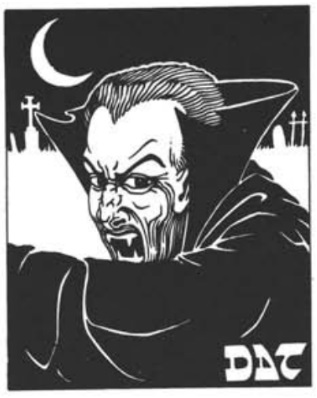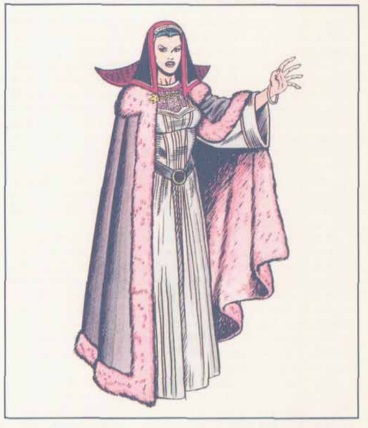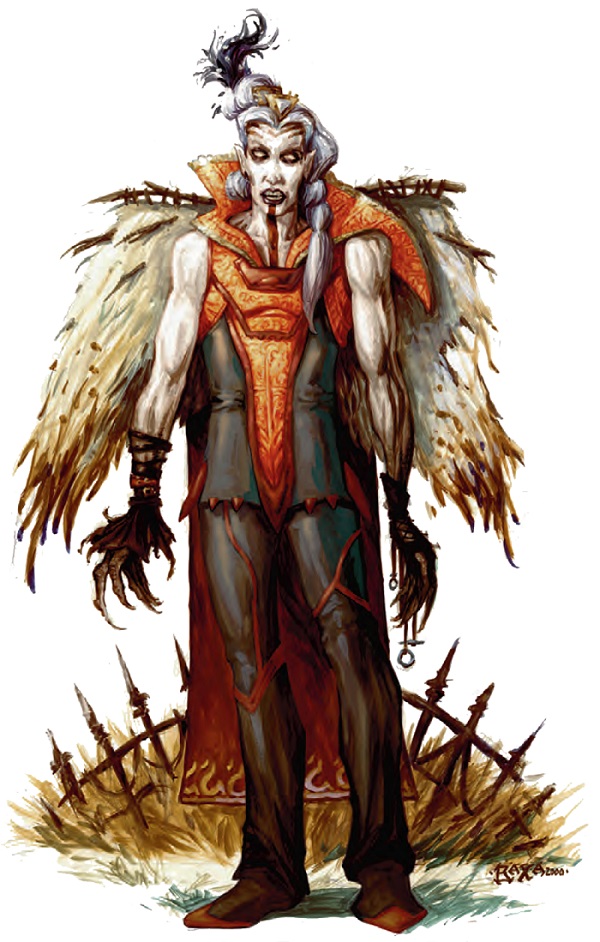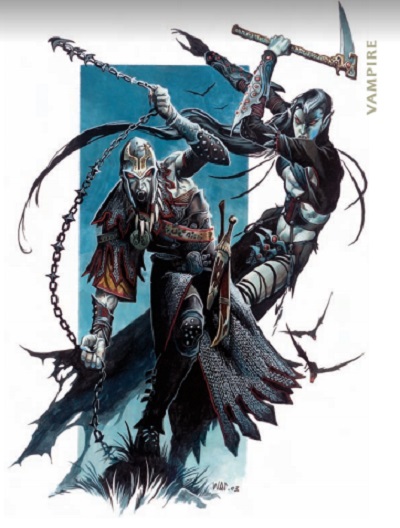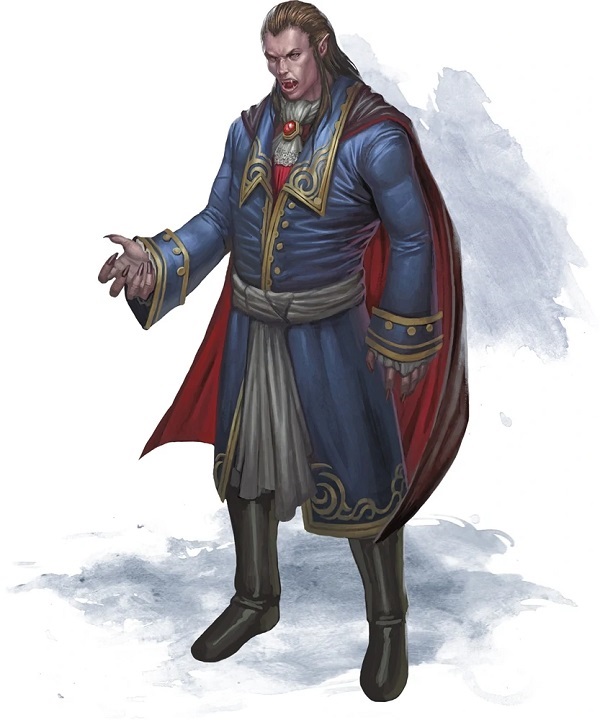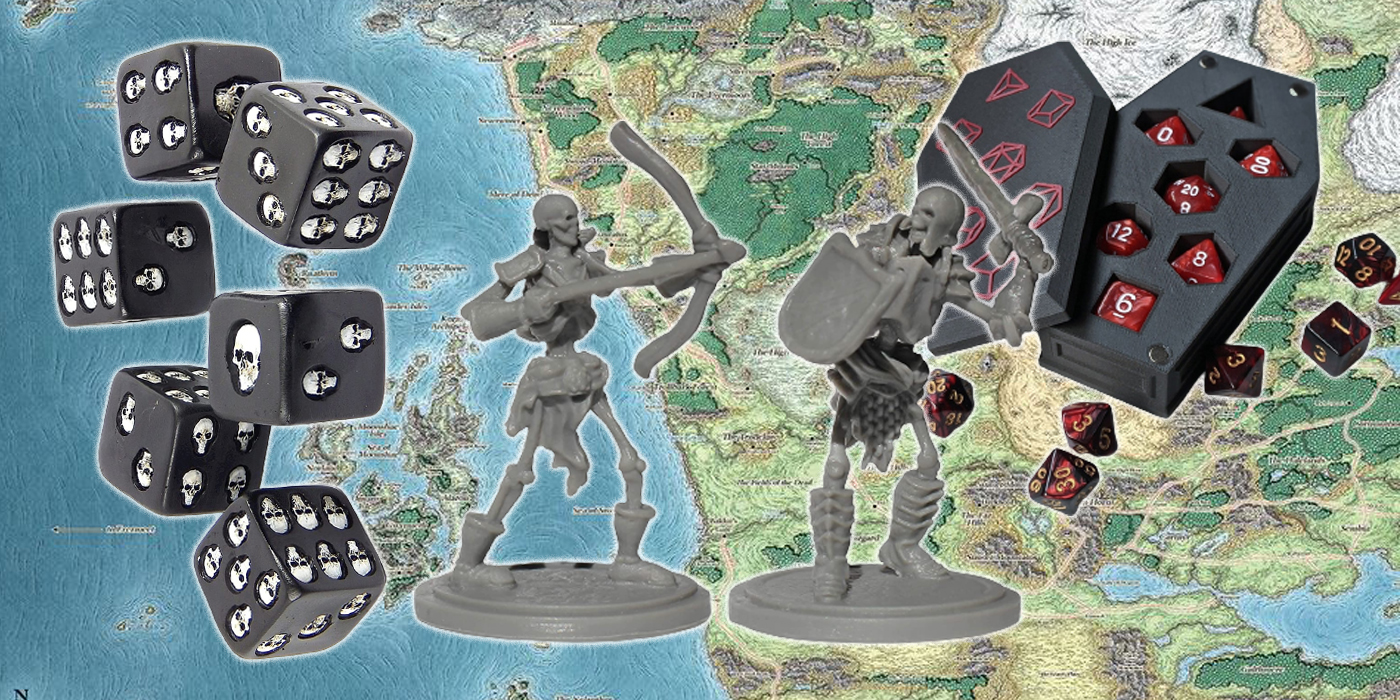D&D Monster Spotlight: Vampires are a Pain in the Neck
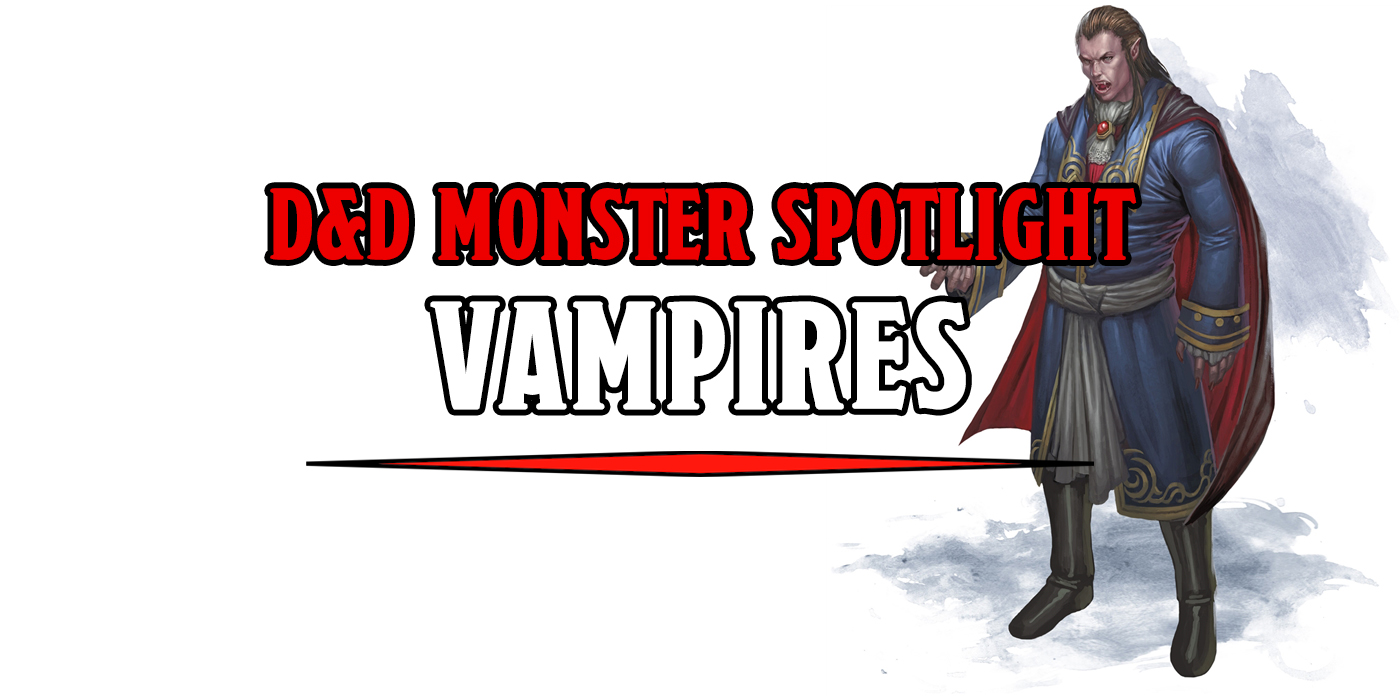
If the castle you’re resting at is a little misty and little full of vermin, your day is about to go from bat to worse with vampires.
Vampire myths are almost as old as history itself. The specifics and names have changed, but demons that drink blood or the dead rising to live pseudo-normal lives is far from a new or original idea. Varieties of what we’d call Vampires are found throughout many cultures all over the world, possibly deriving inspiration from real-world ailments such as porphyria or rabies. Even now the Vampire rules aren’t always identical across the board (Do they sparkle or not?! (This is a joke, please don’t email me.)), but most of the basics are pretty similar. And so with their years and years of history, it’s no surprise to see that Vampires have never not existed in D&D. Honestly, they’re exactly what you’d expect. They’re Vampires, and facing one sure is a pain in the neck.
First Edition
Since Vampires are so well known and so close to standardized, First Edition doesn’t really give you any background about them. Instead, it’s almost an entire page-long list of things that can’t hurt them and ways that they can hurt you. Non-magical weapons don’t affect them, hit points are regenerated at a rate of 3 per melee round and when brought to 0 HP they turn into a gas and float away. Sleep, charm, hold, poison, and paralysis spells do nothing, but cold or electricity-based spells produce half-damage.
A character drained by a Vampire becomes one, under the control of their slayer, a day after being buried. They can be defeated with the usual sunlight or steak-to-the-heart head-cut-off combo or by being immersed in running water. But for a foe this powerful, none of those would be easy; assuming your character knows Vampire lore at all.
Second Edition
Something almost instantly noticeable in 2E’s characterization of Vampires is the concept that they can easily blend in with mortal people unless sunlight or attacking is involved. Even the art of the vampires this time depicts a man and woman who look, by and large, very normal. A little sharp and evil, perhaps, but I’d say that woman has equal odds of being a Vampire, a wicked stepmother, or just a normal woman who’s sick of not being listened to and having the toilet seat in her castle left up. I wouldn’t assume her to be a monster at first glance at all, and that’s the point. Second Edition goes on to spend two full pages on Vampire society, ecology, and so much more detail than 1E regarding combat, but this small change is the most interesting to me for character interaction potential alone.
Third Edition
Third Edition of course has Vampires as fightable foes and monsters. But it almost more pressingly wants you to know just how playable of a creature a Vampire is. Is your character about to become one with the night? Well, don’t worry, because your hit dice are about to increase to d12, your base armor by +6, and you’ll gain a slam attack. Pretty sweet, right?
Fourth Edition
As is pretty standard, 4E creates varieties of Vampire for your fighting pleasure. We’re back to having them presented mainly as a foe and less as a really really cool plan B for your character. Now there’s the Vampire Lord and the Vampire Spawn Bloodhunter, and Spawn Fleshripper minion types. This is in line with previous editions’ mentions that vampires have control over their creations. But it also directly contradicts the exact same material. Now they can’t be harmed with running water or repelled by garlic, contrary to “popular folklore.” This is probably my least favorite variety of D&D Vampire. They seem to have all of the fun and lore stripped away in preference for technical fight mechanics.
Fifth Edition
Fifth Edition always solves all of my 4E problems. They Bring back game-play-friendly flavor text and background and lair information. Plus they restate some Vampire basics that had previously been thrown away such as the aversion to running water. Regeneration now gives the vampire back 20 hit points per turn. This seems scary but for a moderately-leveled adventurer, isn’t an unreasonable amount of damage to dish out in one strike per person. But Vampires can attack twice. Bite and Unarmed Strike both have +9 to hit and charm requires a DC 17 wisdom save. Formidable and often superhumanly intelligent and strategic, vampires are one of the most difficult monsters in the manual.
Have you encountered Strahd? Maybe another vampire your DM home-brewed into existence? Which vampire variety is your favorite in or out of D&D? Let us know in the comments.
Happy Adventuring!

